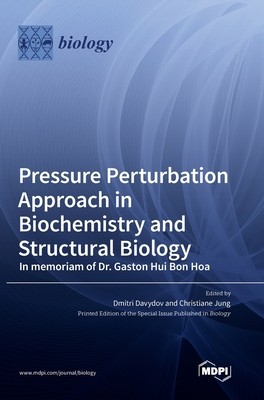
- We will send in 10–14 business days.
- Publisher: MDPI AG
- ISBN-10: 3036546715
- ISBN-13: 9783036546711
- Format: 17 x 24.4 x 1.4 cm, hardcover
- Language: English
- SAVE -10% with code: EXTRA
Pressure Perturbation Approach in Biochemistry and Structural Biology. In memoriam of Dr. Gaston Hui Bon Hoa (e-book) (used book) | bookbook.eu
Reviews
Description
This Special Issue focuses on the effects of hydrostatic pressure on biological systems and the use of these effects for exploring the structure, function, and molecular dynamics of biological macromolecules and their ensembles. Here, we present a selection of papers highlighting new experimental findings and new theoretical concepts in high-pressure biosciences. In these studies, the authors combine pressure perturbation approaches with NMR and optical spectroscopy, kinetic and thermodynamic techniques, functional genomics and transcriptomics, and molecular dynamics simulations to gain new insights into the conformational dynamics of proteins and nucleic acids and to better understand the mechanisms of high-pressure adaptation in piezophiles. The articles collected in this issue demonstrate the unique exploratory potential of the pressure perturbation approach for biochemistry, biophysics, mechanistic enzymology, and evolutionary biology.
EXTRA 10 % discount with code: EXTRA
The promotion ends in 6d.01:01:26
The discount code is valid when purchasing from 10 €. Discounts do not stack.
- Publisher: MDPI AG
- ISBN-10: 3036546715
- ISBN-13: 9783036546711
- Format: 17 x 24.4 x 1.4 cm, hardcover
- Language: English English
This Special Issue focuses on the effects of hydrostatic pressure on biological systems and the use of these effects for exploring the structure, function, and molecular dynamics of biological macromolecules and their ensembles. Here, we present a selection of papers highlighting new experimental findings and new theoretical concepts in high-pressure biosciences. In these studies, the authors combine pressure perturbation approaches with NMR and optical spectroscopy, kinetic and thermodynamic techniques, functional genomics and transcriptomics, and molecular dynamics simulations to gain new insights into the conformational dynamics of proteins and nucleic acids and to better understand the mechanisms of high-pressure adaptation in piezophiles. The articles collected in this issue demonstrate the unique exploratory potential of the pressure perturbation approach for biochemistry, biophysics, mechanistic enzymology, and evolutionary biology.


Reviews